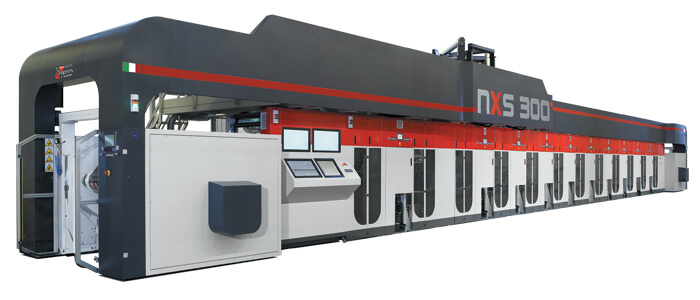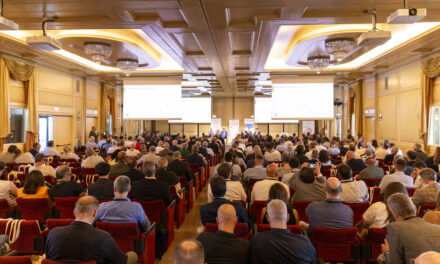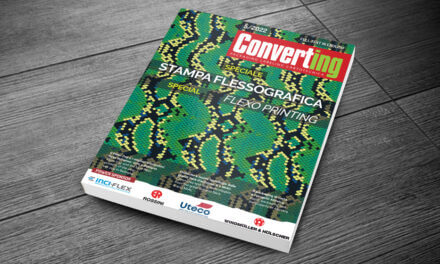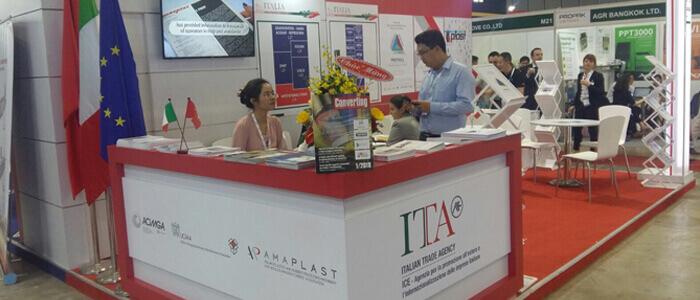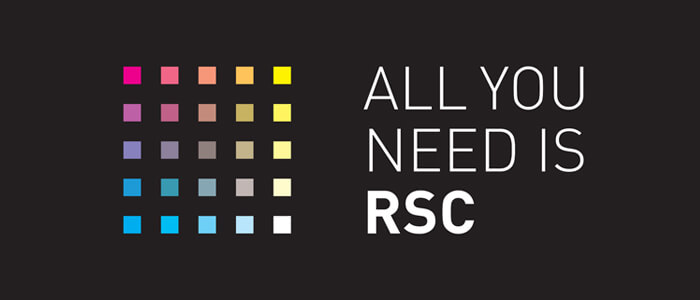Short runs, hybrid presses, up- and downstream groups, upgrading and revamping, sustainability… Uteco analyzes the market and explains how it has developed the technology to meet the new demand trends.
To make available to all users and on all runs the quality, repeatability and stability that only gravure printing can guarantee. This, in short, is the Uteco Group’s goal regarding rotogravure – a technology that for a moment seemed to have reached maturity, and which today we are talking about more and more often. On the one hand because it suffers from the “competition” of flexography, especially (but not only) on short runs, and on the other hand because its technical and market development has accelerated, multiplying its performances and application fields. We asked Alessandro Bicego, Innovation Manager of the Veneto-based group, to help us understand why.
Quality in print
How much is it worth to a company that the distinctive color of the brand is always the same on all the packaging in the world, consistent within the range and without the “sags” that convey the idea of old and shoddy goods? A lot, almost everything. That’s the primary reason for rotogravure printing, synonymous with consistent, repeatable quality. “Maintaining quality in print runs is very difficult,” Bicego comments, and this is where the inherent nature and “heaviness” of gravure itself make the difference. But perhaps even more important, adds the manager, is the simplicity with which those results can be achieved, with a few elementary operations, which do not require sophisticated skills: “it is no coincidence that our machines are so appreciated even in economies where the skills of the operators are underdeveloped, such as the Far East or sub-Saharan Africa”.
Rotogravure, however, offers many other, less publicized advantages. Such as the versatility that comes from being able to print both front and back, with optimal register, with standard equipment: “in roto we can print 7 colors on the front side and 3 on the reverse side in a completely natural way, while in flexo we have to install additional components that complicate the flow and increase waste,” explains Bicego. Or like the sustainability that comes from using less ink, generating savings in purchasing, production and finally disposal.
But the renewed success of this technology is also due to the growing importance, in packaging and beyond, of a series of ancillary processes to printing, which can only be carried out in roto.
Hybrid lines and groups
High-coverage primers and base coats, functional and aesthetic coatings, coatings with matt, soft-touch or wrinkled effects… the number and variety of applications that can only be carried out with gravure printing units is growing together with marketers’ hunger for distinctiveness. Applications that feed two areas of business that are undergoing lively development: hybrid lines and individual units that can be installed on existing lines to implement new functions.
“A hybrid machine requires the perfect integration of technologies that operate with different logics and speeds, in order to be able to efficiently carry out more types of processing. And in this, in Uteco we are really good”, declares Alessandro Bicego. “Not only do we have the mental elasticity to design outside the box, but we realize all the product lines, with all the technologies, in the same industrial site. The integration and transfer of skills, and the difficult work of engineering are greatly facilitated by this contiguity, and we are selling many machines with in-line roto elements, which perform all up and down stream processing, such as the 4-color digital and 4-color analog roto+flexo system we have just created for a very large American converter. And it’s a growing market”.
In parallel, the market for upgrades is also growing. “We install many roto groups on existing machines, in combination with flexo, offset and obviously digital. Sometimes we make them to complete the machines of others, like a very large manufacturer of digital machines to whom we supply customized, fully automatic roto units, perfectly consistent with the logic of the host line. Sometimes they are integrations of roto machines already installed, even by competitors, to adapt them to new market needs and reduce the time to market without having to make the investment of a new purchase. And our roto presses are designed precisely to allow subsequent upgrades”.
Reducing the cost of print runs
In this market context, all manufacturers are committed to overcoming the typical criticalities of rotogravure printing, starting with those that slow down job changes. As for Uteco, aiming at optimization. “If on a one million sq. m. print run a waste of 1000 meters doesn’t represent a problem, on 5000 sq. m. it makes 20% and is unsustainable. In redesigning our machines, therefore, we have set ourselves the objective of reducing the cost per print run, and we have done this in two ways: by sifting through every single element of the workflow and material handling, to gain efficiency in terms of TCO, and by automating all the handling operations – positioning of the doctor blade, positioning of the basin, washing, registration… – importing top technology on models for short runs”.
The summa of this work is the NXS 300: a machine that effectively prints even short and ultra-short runs (around 30,000 sqm) at a speed of 300 m/min, with job changes of 20 minutes. Here Uteco’s best technology is concentrated in a compact design with closed structure, to reduce noise and contain solvent evaporation. And in the exclusive trolley with frontal movement that, unlike the classic “L-shaped insertion” tool, allows to change cylinders and basin without entering the unit.
“The price has been redefined for this range of applications and the market reception has been very gratifying, with one of the largest and most innovative Taiwanese converters purchasing the second unit shortly after the first and a decidedly positive order trend,” testifies Bicego. He emphasizes: “Thanks to the greater efficiency of all aspects of the cycle, users are starting to handle in roto even jobs that they used to do only in flexo – even with fast-drying metallic inks, or on difficult substrates such as LDPE… – significantly reducing the distance between technologies. And sometimes even saving on colors thanks to the wider gamut that can be obtained in roto with four-color printing alone, saving on inks and reducing the environmental impact”.
New materials and intelligent machines
And it is precisely sustainability that guides Uteco’s R&D, along a road of radical renewal taken some time ago. “In order to face the problems of flatness, speed and general runnability of the new sustainable plastics, we have been working for years in close collaboration with the university and with substrate producers, and now we have “our” solution”, says Bicego. And he specifies, “It is not a machine that is ‘good’ at processing a specific material, but one that is able to ‘understand’ what material it needs to print and how it behaves, and then to self-set itself accordingly through advanced use of sensors and IoT.”

